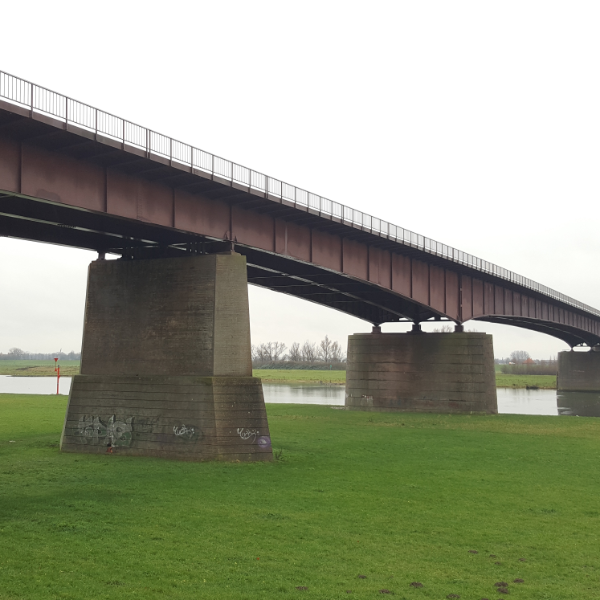Steel bridges

Steel bridges
Analysing existing and new steel bridges is a specialisation within Witteveen+Bos’ domain. Steel is an extremely suitable construction material, especially for the construction of large spans. Due to the continuous, heavy load on road and rail infrastructure, the materials show fatigue, causing them to deform or crack, which adversely affects their load-bearing capacity.
It requires several studies to determine whether an infrastructure structure can be maintained. It should first be demonstrated that the degradation of the materials of which the structure is composed remains within acceptable limits. We do this by conducting inspections and material analyses. In addition, calculations are performed to demonstrate the structural safety. In some cases, the calculations will need to be compared to the actual behaviour of the structure. This can be achieved by providing the structure with sensors.
The role of Witteveen+Bos
Witteveen+Bos by itself, as well as together with partners, develops methods to monitor structures and conduct measurements. We have our own sensors and have developed our own data analysis and interpretation software. The advantage of our proprietary measurement system is that it seamlessly matches the information needs of the structural engineer. We currently have various systems at our disposal that allow us to provide advice and perform measurement and monitoring campaigns. Some examples are:
- structural health monitoring of road bridges, including measurements of vibrations, deformations and temperature;
- development of the monitoring design for the Fehmarnbelt immersed tunnel between Germany and Denmark;
- measurement and consultancy services for the effects of wheel roundness of trains;
- monitoring and analysing the movements of floating solar islands;
- researching the possibility of using innovative monitoring based on magnetic fields to record damage caused by fatigue in steel bridge decks (in collaboration with TU Delft).
The interpretation of the collected data provides an important addition to the calculation models. Combining theoretical models and real-world data adds value for our clients.
Measuring with advanced sensors
In the Replacement and Renovation task (V&R task), we perform measurements to validate the following points:
- The action of forces in the calculation model;
- The occurring load and load distribution;
- The deformation behaviour of structures.
In interdisciplinary teams, experts with a civil engineering or architectural engineering background work together with experts in the field of measurement and control technology. Together, they obtain reliable and high-quality measurement data that add value to our consultancy services.
Effects of forces
When there are uncertainties about the effects of forces in a structure, we can validate this by performing strain and other measurements. A calibrated vehicle is used during the bridge closure to ensure the data obtained is reliable. This involves measuring the exact distances between the wheels, the thread widths and wheel pressures before starting the test. The vehicle is then guided over the bridge multiple times and at different speeds. In this procedure, the recorded strains are converted to stresses and compared to the results from our calculation models.
For our work on the Haringvliet bridge, the measured values of such a validation showed a close match with the results of our calculation model, which shows that the calculation model proved reliable in this respect.
Occurring loads
The loads we need to calculate according to the standard for bridges are based on very intensively and heavily travelled bridges. This results in an upper limit for load and intensity that is considered conservative for many bridges. It is therefore worth using measurements to determine the actual strains occurring in a steel structure during the lifespan of the bridge. This can be achieved by performing a continuous measurement of the stresses. By combining these data with information from camera systems, we can find out what kind of traffic causes the highest stresses in the structure. This allows us to evaluate the effect of loads more accurately and to better align theory and practice.
Deformation behaviour of structures
For similar reasons, it is important to validate the deformation behaviour of structures through measurements. Combining long-term measurement of the steel strains occurring over time allows for optimising strength and fatigue calculations. The theoretical influence lines we establish based on simulations are verified and adjusted based on these measurements. Thanks to this process, we can refine our calculations and align them more accurately with the actual condition and behaviour of the structure.
More information?

